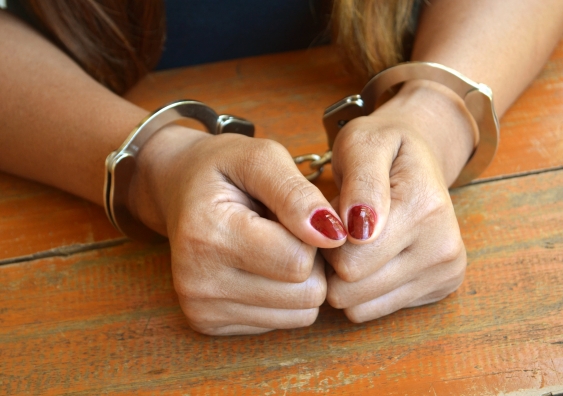Australia is locking up too many women but the UK offers a blueprint for a radical new approach
Australia's female prison population has soared, with the increase significantly greater than that for men, writes Ruth McCausland.
Australia's female prison population has soared, with the increase significantly greater than that for men, writes Ruth McCausland.

OPINION: The number of women in prison in Australia has increased dramatically over the past decade. While men still make up the majority of prisoners, the increase in the incarceration rate for women is significantly greater than that for men.
It’s clear that new approaches are needed. As a starting point, Australian policymakers could take note of the ideas of Baroness Jean Corston, who is visiting Australia this week.
Baroness Corston led a world-first review of women with vulnerabilities in the criminal justice system in the United Kingdom. The 2007 Corston Report set out a blueprint for a radically different approach to a growing social and economic problem.
Based on her review of women in custody, Baroness Corston called for a:
distinct, radically different, visibly-led, strategic, proportionate, holistic, woman-centred, integrated approach.
Her recommendations included that:
The UK Government accepted 41 of the 43 recommendations in the 2007 Corston Report. While there has since been criticism around a loss of momentum and resources to support the changes, the number of women in prison has fallen since the recommendations were implemented. Two women’s prisons have closed as a result.
One important outcome is that the UK has expanded community women’s centres as an alternative to prison. These “one-stop-shops” provide case management and support for women to address their social, health and welfare needs.
The idea is that better access to specialist services, health care, housing and support reduces the risk of women reoffending.
Over the 10 years from 2005-2015, the number of women in prison in Australia grew by more than 70%. Indigenous women are the most over-represented and fastest growing group in our prisons.
And it’s not because women are committing more serious offences. A growing proportion of women held in prison are unsentenced (on remand) due to factors such as changes to bail laws. A recent survey found that a third of women in custody in New South Wales at the time of the survey were there on remand – before they had been found guilty of a crime. And the numbers imprisoned while waiting to be sentenced would be far higher over a full year.
Over the past 20 years, politicians have introduced harsher penalties for drug-related and certain petty offences. This has meant that it has become more likely that people will go to prison on remand or on short sentences, which has a greater impact on women because they tend to commit less serious crimes. The case of Ms Dhu in Western Australia, who died a horrific death after being taken into police custody for unpaid fines, highlights the effect of laws sanctioning detention for minor offences.
According to a 2014 study by NSW Corrective Services, 65% of women released from prison had been in custody for less than three months.
Prisoners are more disadvantaged than the rest of the population, however women in prison are even more disadvantaged than men. The majority of women in prison are poor, disadvantaged, and have experienced sexual and physical abuse and violence.
Many women in prison have been diagnosed with mental health disorders such as depression and borderline personality disorder. Many have cognitive impairments such as intellectual disability, fetal alcohol spectrum disorder and acquired brain injury. Alcohol and other drug dependencies are common, and are often connected to women’s offending behaviour. Homelessness and housing instability are widely reported by women in prison, who also tend to have low levels of education and minimal employment histories.
Aboriginal women with mental and cognitive disabilities are the most disadvantaged.
The most common offences for female prisoners in 2015 were:
Half of the women in prison have children, and 14% have more than three children under the age of 16.
As a society, we have increasingly seen prison as an acceptable place for disadvantaged women and even as a way of providing them with rehabilitation and treatment. Yet the majority of women cycle in and out of prison on remand or short sentences, unable to access the support and services they need. This undermines their capacity to care for children and others in their community. It makes it harder for them to find housing and jobs, compounding their disadvantage.
Our rising women’s incarceration statistics are a compelling reason to trial the UK’s model in Australia. We urgently need community-based options that are women-centred, holistic and able to respond to the trauma and complex support needs of women who are otherwise going in and out of prison on remand and short sentences. We especially need culturally competent services that are focused on the needs and experiences of Indigenous women.
During her visit, Baroness Corston is launching a project aimed at establishing such a model for women who are at risk of offending or re-offending. The Miranda Project aims to build on evidence from the UK to create a long-term, community-based option for diverting women from the criminal justice system.
As well as the devastating impact on incarcerated women and their families, it costs on average $301 per day or almost $110,000 a year to keep someone in prison.
It may sound like common sense, but against a decades-long trend of locking up more and more women, this would be truly radical.
Ruth McCausland is a Research Fellow in the School of Social Sciences, UNSW.
This opinion piece was first published in The Conversation.